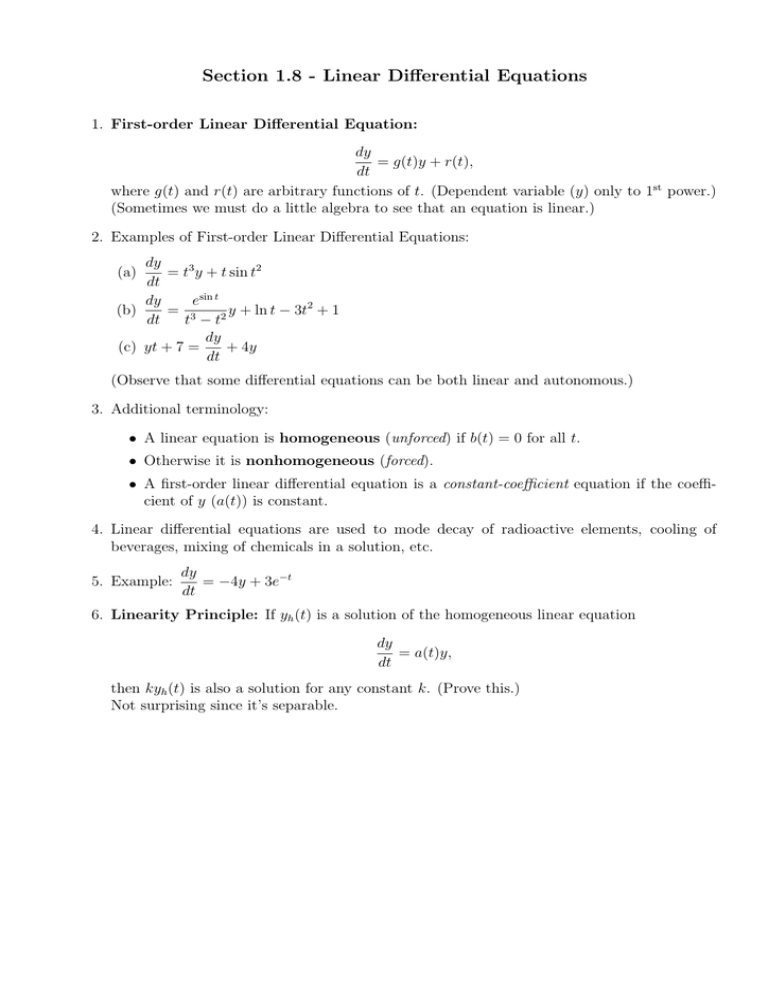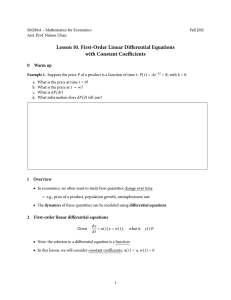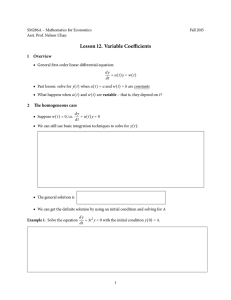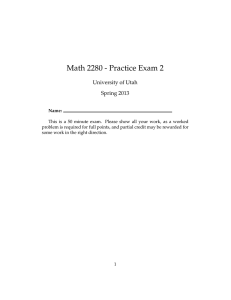Section 1.8 - Linear Differential Equations
advertisement

Section 1.8 - Linear Differential Equations 1. First-order Linear Differential Equation: dy = g(t)y + r(t), dt where g(t) and r(t) are arbitrary functions of t. (Dependent variable (y) only to 1st power.) (Sometimes we must do a little algebra to see that an equation is linear.) 2. Examples of First-order Linear Differential Equations: dy = t3 y + t sin t2 dt dy esin t (b) = 3 y + ln t − 3t2 + 1 dt t − t2 dy (c) yt + 7 = + 4y dt (a) (Observe that some differential equations can be both linear and autonomous.) 3. Additional terminology: • A linear equation is homogeneous (unforced) if b(t) = 0 for all t. • Otherwise it is nonhomogeneous (forced). • A first-order linear differential equation is a constant-coefficient equation if the coefficient of y (a(t)) is constant. 4. Linear differential equations are used to mode decay of radioactive elements, cooling of beverages, mixing of chemicals in a solution, etc. 5. Example: dy = −4y + 3e−t dt 6. Linearity Principle: If yh (t) is a solution of the homogeneous linear equation dy = a(t)y, dt then kyh (t) is also a solution for any constant k. (Prove this.) Not surprising since it’s separable. 7. Extended Linearity Principle: Consider the nonhomogeneous equation dy = a(t)y + b(t) dt and its associated homogeneous equation dy = a(t)y. dt (a) If yh (t) is any solution of the homogeneous equation and yp (t) is any solution of the nonhomogeneous equation , then yh (t) + yp (t) is also a solution of the nonhomogeneous equation. (b) Suppose yp (t) and yq (t) are two solutions of the nonhomogeneous equation. Then yp (t)− yq (t) is a solution of the associated homogeneous equation. Thus, if yh (t) is nonzero, kyh (t) + yp (t) is the general solution of the nonhomogeneous equation. 8. Steps for solving a linear equation: (a) Find the general solution to the homogeneous equation (separation of variables). (b) Find one particular solution of the nonhomogeneous equation (may be difficult if a(t) is not constant). Often done by guess and check. (c) Add the two above solutions together to get the general nonhomogeneous solution. 9. Other examples: dy = 2y + sin 2t (Guess yp (t) = α cos 2t + β sin 2t.) dt dy y (b) = + 4et/2 (Second guess: yp (t) = αtet/2 ). dt 2 (a)






